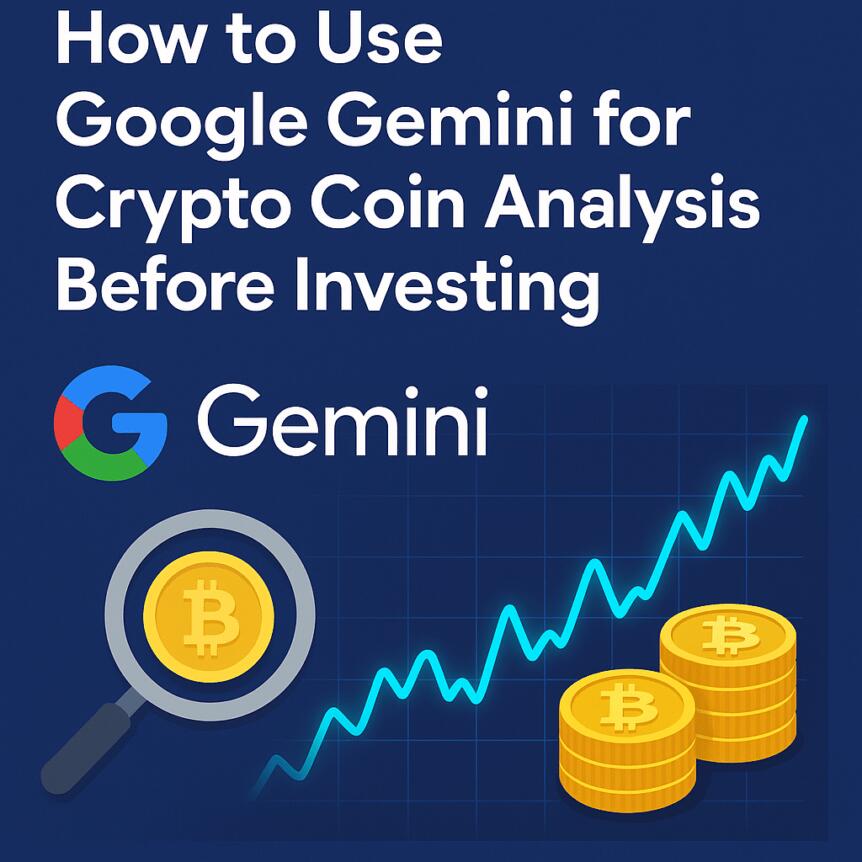The cryptocurrency market is becoming increasingly complex, with an abundance of data such as white papers, token economics, and social discussions. To effectively navigate this environment, investors are turning to advanced AI tools like Google’s Gemini, which acts as a research assistant to help organize and analyze vast pools of information. Although it’s not a crystal ball, Gemini simplifies your research so you can make smarter decisions in the rapidly changing world of cryptocurrency.
- Gemini acts as a data summarizer and text analyst, not a price forecaster or financial advisor.
- The effectiveness of your research output will greatly depend on how the prompts are structured and detailed.
- The structured workflow includes fundamentals analysis, token economics analysis, and competitor mapping.
- Always check AI-generated insights through official sources, blockchain explorers, and primary documentation.
- Appropriate security measures are important when deploying AI tools in research, especially regarding API keys.
What can Gemini do for cryptocurrency research?
Gemini’s primary role is to act as a knowledgeable co-pilot, helping investors process large volumes of blockchain data and industry insights. Rather than replacing human expertise, it enhances it by converting overwhelming information into actionable knowledge. This can be particularly useful when analyzing the fundamentals of blockchain projects, analyzing token economics, or planning the competitive landscape within the cryptocurrency ecosystem.
However, it is important to remember that Gemini is not a real-time market oracle and is not a substitute for independent research. Our strength lies in synthesizing information and supporting strategic analysis rather than predicting price movements.
How to Research Cryptocurrency with Gemini
The key to effective AI-assisted research is creating prompts that are accurate and context-aware. Ordinary questions tend to yield ambiguous results, so formulating your queries like an expert will greatly improve the quality of your insights. Here are some best practices:
- Role assignment: Use directives such as “Works as a senior blockchain analyst” to frame your response with domain-specific expertise.
- Format request: Specify the desired output structure, such as a comparison table or SWOT analysis, to make the information easily digestible.
- Iterate and improve: Use follow-up questions to deepen your understanding, for example by probing into details such as the project’s competitive advantages based on your initial analysis.
Part 1: Deconstructing the Project Basics
Start with a detailed review of the project’s core technology, token economics, and team background. For example, if you are analyzing Solana, a high-performance layer 1 blockchain optimized for decentralized applications, you can access it through the following prompt:
“Act as a blockchain engineer. Summarize Solana’s whitepaper in five points, highlighting Proof-of-History and Proof-of-Stake mechanisms and how they differ from existing layer 1 blockchains.”
Examining token economics requires analyzing token distribution, vesting schedules, and value generation mechanisms. The target prompt is:
“I work as a blockchain tokenomics analyst. I summarize Solana (SOL)’s token allocation, vesting schedule, and potential value drivers in 6 points.”
To evaluate the founding team’s experience:
“Serve as a Web3 researcher. Provide relevant experience from Solana’s founding team, including contributions to other cryptocurrency projects, and a brief overview of noteworthy investors.”
Part 2: Competitive Landscape and Sentiment Mapping
It is important to understand where your project stands among competitors and how it is perceived externally. For example, here’s how Ethereum’s main competitors compare on transaction finality and developer support:
“Working as a market intelligence analyst. Comparing the top three Ethereum competitors based on transaction finality, developer ecosystem support, and network activity as of Q3 2025.”
Social sentiment analysis, especially after major network updates such as Solana’s testnet launch, includes monitoring community discussions.
“We analyze public sentiment on X and cryptocurrency forums regarding Solana’s recent testnet deployment. We highlight positive stories, concerns, and influential voices shaping opinions.”
Part 3: Performing Advanced Risk Analysis
An in-depth risk assessment includes reviewing security audits and understanding the regulatory environment. For example, summarizing audit findings or analyzing legal risks based on jurisdictional data privacy and securities laws could be streamlined with prompts such as:
“Summary the key vulnerabilities identified in Solana’s recent security audit and whether these issues have been addressed.”
“Assess regulatory risks for decentralized off-chain computing projects, considering securities and data privacy laws in key jurisdictions.”
The on-chain governance model also benefits from target prompts.
“Describe Solana’s governance process, including proposal submission, voting mechanisms, and quorum requirements.”
Risks and best practices when using AI in research
Despite its versatility, Gemini is an analytical supplement and not an oracle of truth. AI models can sometimes produce confident but inaccurate information, highlighting the importance of independent verification. Always cross-reference important data points with official sources such as project websites, whitepapers, and blockchain explorers. Integrating AI tools with human oversight can leverage processing power while maintaining the accuracy and reliability of cryptocurrency research.
This article is for informational purposes only and should not be taken as investment advice. Always conduct comprehensive research before engaging in any trading or investment activity.

